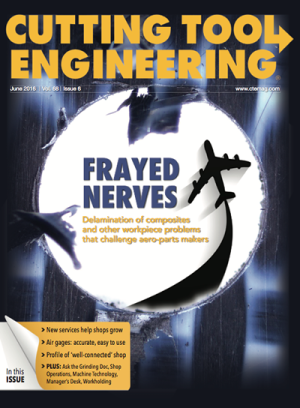ITAMCO pushes the innovation envelope to serve its customers and workforce.
It’s fitting that “Technology” is part of Indiana Technology and Manufacturing Cos.’s name. In addition to providing a full slate of machining and assembly services, ITAMCO created what it says is the first industrial Bluetooth transmitter (called iBlue) and continues to develop a broad range of manufacturing apps for mobile devices and Google Glass. What's more, ITAMCO has produced a virtual manufacturing showroom and developed a manufacturing forklift simulator that allows users to interact with factory equipment using the MTConnect protocol, Autodesk Factory Suite, Unity 3D game development platform, Oculus Rift virtual-reality headset and Leap motion controller. (For more information about the simulator, see the Industry News item from CTE’s March 2016 issue.)

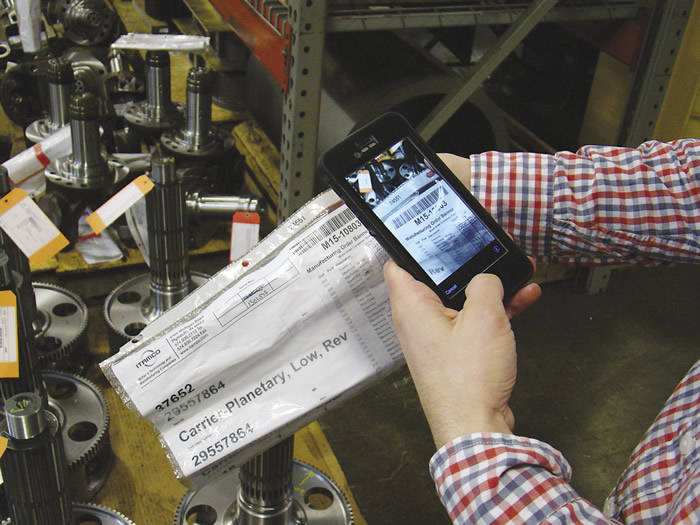
All ITAMCO shop workers carry a smartphone or tablet, which can be used for scanning part bar codes. All images by A. Richter.

ITAMCO is also conducting research projects with two of the federally funded National Network of Manufacturing Institutes: the Chicago-based Digital Manufacturing and Design Innovation Institute and America Makes (National Additive Manufacturing Innovation Institute), Youngstown, Ohio. In connection with America Makes, Joel Neidig, lead technology developer at ITAMCO, explained that the company’s IT team, working with Johnson & Johnson, the University of Notre Dame and the University of Pittsburgh, developed a plug-in for Autodesk CAD software that designs support structures and orientation of the 3D model and optimizes it for 3D printing.
“Our software automates that process and verifies that you have a good design when you go to print,” he said, adding that the team ITAMCO is on at America Makes primarily prints replacement hips and knees.
Humble Origins
ITAMCO goes back to its 1955 roots as Indiana Tool and Manufacturing Co. Inc. The business probably wouldn’t be around today if an automaker hadn’t dragged its feet when responding to a business proposition from the company’s founders, Neidig said. His great uncle, Donald Neidig, and grandfather, Noble Neidig, both worked at the now-defunct South Bend Tool and Die, with Donald serving as a vice president and Noble working during the summer while attending college. After Noble graduated, Donald proposed the two establish a Ford dealership, with Noble suggesting they build a small shop in the back for machining parts like brakes.

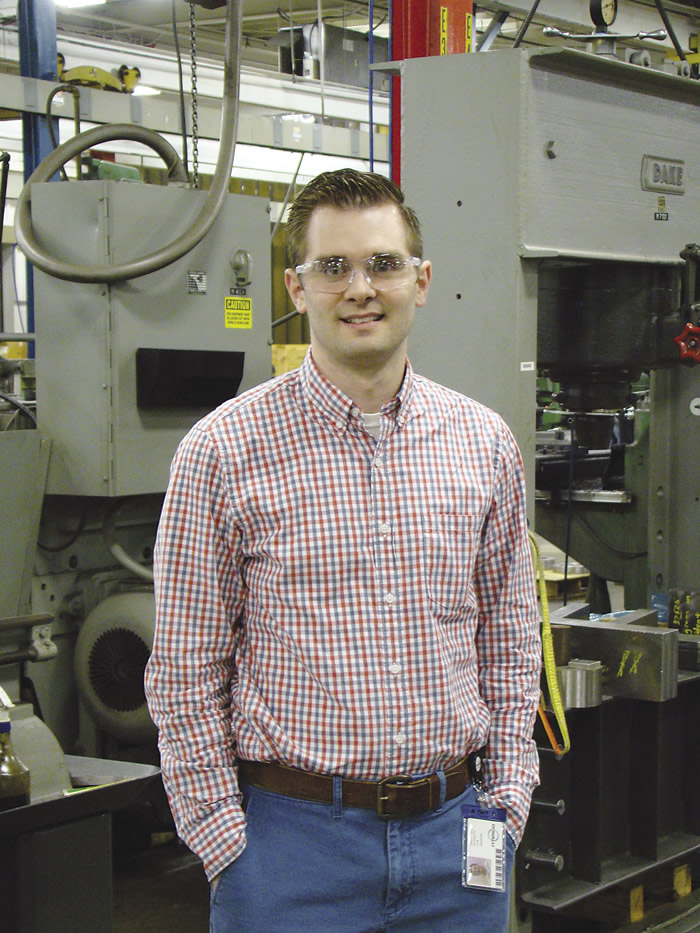
Joel Neidig, lead technology developer, is part of the third generation of the Neidig family at ITAMCO.

The two brothers patiently waited for a reply from the automaker, and, after determining their application wouldn’t be accepted, they opted to open a stand-alone machine shop instead, Neidig said. Lo and behold, they received an acceptance letter from Ford about a week after incorporating the shop—but decided it was too late to go back to the original plan.
“My uncle said, ‘I’m just going to take it as a sign from God that this is what He wants us to do, and so this is what we’re going to do,’” Neidig said.
The shop began in a 4,000-sq.-ft. building built by Joel’s great grandfather, who was a carpenter by trade. “He didn’t work for the company,” Neidig said, “but, naturally, they hired their dad to help assist with the construction.”
From there, the company continued to grow while attracting other family members to the manufacturing business. Neidig, who’s a third-generation member, joined the company 12 years ago after graduating from college. “Currently, my father [Gary] is the president, I have two uncles who are vice presidents and other family members in various positions.”

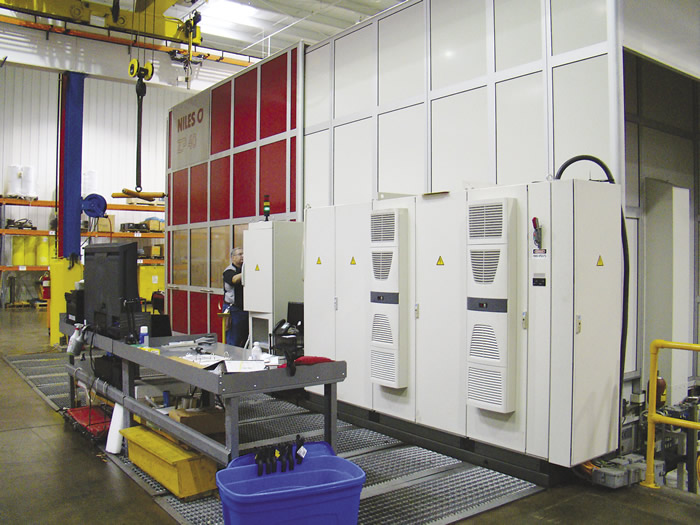
The Kapp Niles ZP40 CNC universal gear grinding machine weighs about 200,000 lbs. and arrived at ITAMCO in 11 crates.

ITAMCO has two plants: a 100,000-sq.-ft. one in Plymouth, Ind., and a 385,000-sq.-ft. facility in Argos, Ind., which it purchased in 2006. An ITAMCO-dedicated, 15-mile (24.1-km), fiber-optic cable connects the two facilities. The company produces components for oil-exploration equipment and the marine, rail, mining, wastewater and construction markets.
Making Chips
Of course, since its inception, the company has focused on adding value to hunks of metal by machining them. Neidig pointed out that the shop’s capabilities include milling, drilling, horizontal and vertical turning, EDMing, boring, sawing and ID and OD grinding. In addition, ITAMCO performs hobbing, shaping, shaving, broaching and grinding to manufacture gears. “We’re not just your typical job shop,” Neidig said.
Parts range from those about the size of a coffee cup lid to gears 4m (157") in diameter. Part runs range from one-offs of large gears to hundreds of thousands of parts, such as clutch and reaction plates. In addition to conventional machining, they also offer highly complex, large mechanical and electrical custom-assembly services. For example, a project completed earlier this year encompassed making and assembling a series of gear-drive units that weigh more than 45,000 lbs. (20,412 kg) and testing them in-house with 5,000-hp (3,729kW), 4,000v AC motors.

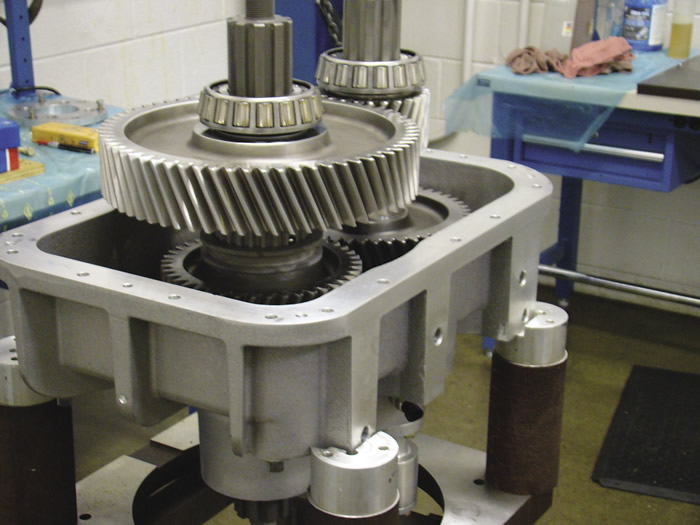
Assembly of a two-speed transfer case at ITAMCO.

The list of workpiece materials ITAMCO machines include gear alloys, carbon steel and ductile or gray iron castings, with a few exotics from time to time, Neidig said.
As previously noted, ITAMCO performs additive manufacturing. It can print plastic parts but not metal ones. However, that may soon change. “Hopefully, by the end of the year we will have a direct-metal, laser-sintering machine for smaller 3D printing,” Neidig said, adding that ITAMCO is also researching hybrid equipment, which combines additive and subtractive manufacturing in one machine, primarily for repairing parts.
Getting Connected
Efficiently gathering information from all the company’s manufacturing equipment is critical to optimize production and increase productivity. Therefore, ITAMCO is a big proponent of MTConnect, according to Neidig, who is on the technical advisory group that writes standards for the open, royalty-free, manufacturing-communications protocol.
Neidig said MTConnect has enabled ITAMCO to “attack the low-hanging fruit” and look at different pieces of data that the protocol generates so the company can know where to focus its efforts and best make a positive impact. “Before, we managed by crisis, and now we are managing by the data we receive. We can attack problems better that way.”
Moving forward, Neidig predicts the vast majority of all machining equipment will be MTConnect-compatible. Connecting productive legacy equipment, however, can be a challenge. At ITAMCO, the shop is tackling that challenge using various adapters and “black boxes,” he said. “There is a road to connecting.”
Neidig emphasized that it’s important to be open and transparent with MTConnect and the data generated during machining operations. The monitoring information that ITAMCO management sees is available to operators as well, which, in turn, helps the operators do their jobs better.
That approach helps retain workers, but to help train and develop its future workforce, the manufacturer partnered with the Plymouth Community School Corp. and Ivy Tech Community College to establish the ITAMCO Manufacturing Center at Plymouth High School. The aim of the initiative is to get high school students interested in manufacturing and help close the skills gap between high schools’ curricula and the requirements of parts manufacturers.

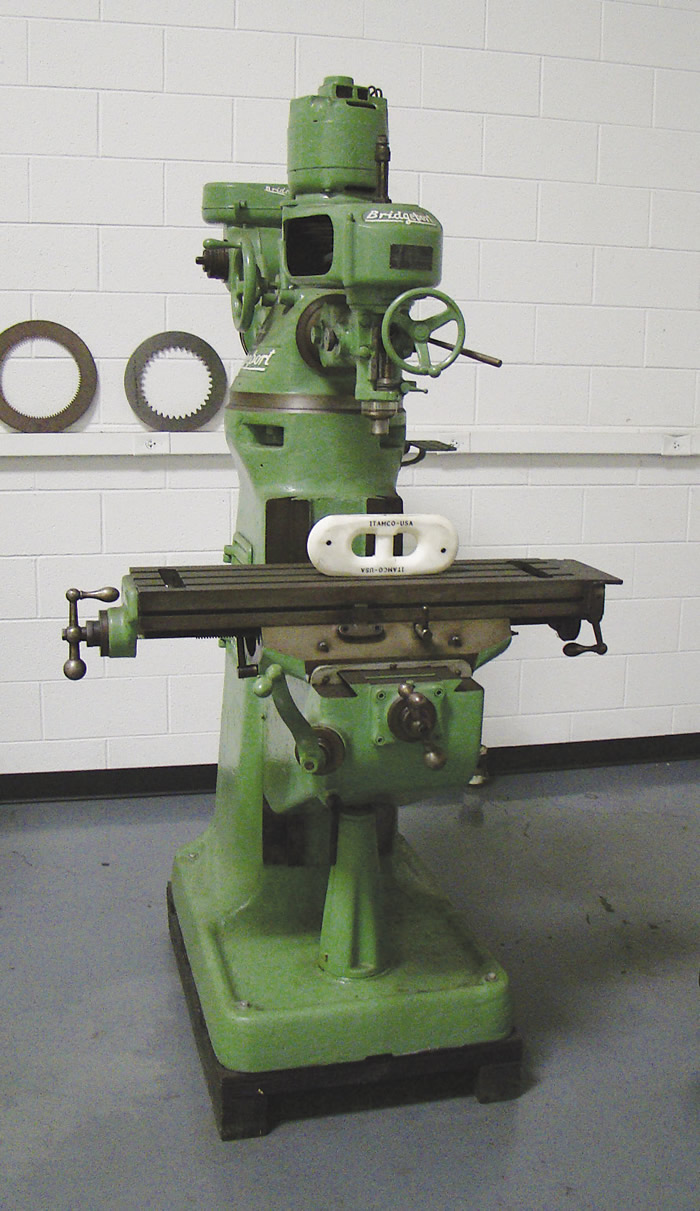
The company’s first machine is this 1952 Bridgeport mill.

Neidig noted ITAMCO hired a few of the students who participated in Plymouth High School’s Advanced Manufacturing course. “We will bring them in from the school, start their apprenticeships and train them here.”
In addition, ITAMCO donated $100,000 worth of equipment for the program and provides technical assistance. The equipment includes a coordinate measuring machine, three CNC machine tools and several manual knee mills and lathes.
Besides gaining manufacturing knowledge, program participants benefit in a couple other ways. “They get their NIMS certification for being a journeyman machinist,” Neidig said. “They also get college credit through their high school because we’ve partnered with Ivy Tech Community College to do that.”
For more information about Indiana Technology and Manufacturing Cos. (ITAMCO), call (574) 936-2112 or visit www.itamco.com.

Preserving Natural Habitat
In addition to investing in manufacturing technology and its workforce, Indiana Technology and Manufacturing Cos. invests in Indiana, according to ITAMCO’s Joel Neidig. The investments include establishing a 750-acre nature preserve known as the ITAMCO Restoration Project, which is adjacent to its facility in Plymouth, planting 300 acres of hardwood trees, which launched the Woodland Restoration Project in 1997, and preserving wetlands.
“We’ve lived here our whole lives,” Neidig said. “As a family-owned business, we look out 30 to 40 years to position ourselves and not just the next quarter.”
In addition to the preserve, ITAMCO also owns a scenic local golf course. “We had our 60th anniversary outing there,” he said. “We have an outing every year to celebrate the anniversary of the company and take the entire company out.”
ITAMCO also will take its employees to Chicago in September to attend IMTS 2016.
—A. Richter
Contact Details
Related Glossary Terms
- alloys
alloys
Substances having metallic properties and being composed of two or more chemical elements of which at least one is a metal.
- boring
boring
Enlarging a hole that already has been drilled or cored. Generally, it is an operation of truing the previously drilled hole with a single-point, lathe-type tool. Boring is essentially internal turning, in that usually a single-point cutting tool forms the internal shape. Some tools are available with two cutting edges to balance cutting forces.
- broaching
broaching
Operation in which a cutter progressively enlarges a slot or hole or shapes a workpiece exterior. Low teeth start the cut, intermediate teeth remove the majority of the material and high teeth finish the task. Broaching can be a one-step operation, as opposed to milling and slotting, which require repeated passes. Typically, however, broaching also involves multiple passes.
- computer numerical control ( CNC)
computer numerical control ( CNC)
Microprocessor-based controller dedicated to a machine tool that permits the creation or modification of parts. Programmed numerical control activates the machine’s servos and spindle drives and controls the various machining operations. See DNC, direct numerical control; NC, numerical control.
- computer-aided design ( CAD)
computer-aided design ( CAD)
Product-design functions performed with the help of computers and special software.
- gang cutting ( milling)
gang cutting ( milling)
Machining with several cutters mounted on a single arbor, generally for simultaneous cutting.
- grinding
grinding
Machining operation in which material is removed from the workpiece by a powered abrasive wheel, stone, belt, paste, sheet, compound, slurry, etc. Takes various forms: surface grinding (creates flat and/or squared surfaces); cylindrical grinding (for external cylindrical and tapered shapes, fillets, undercuts, etc.); centerless grinding; chamfering; thread and form grinding; tool and cutter grinding; offhand grinding; lapping and polishing (grinding with extremely fine grits to create ultrasmooth surfaces); honing; and disc grinding.
- grinding machine
grinding machine
Powers a grinding wheel or other abrasive tool for the purpose of removing metal and finishing workpieces to close tolerances. Provides smooth, square, parallel and accurate workpiece surfaces. When ultrasmooth surfaces and finishes on the order of microns are required, lapping and honing machines (precision grinders that run abrasives with extremely fine, uniform grits) are used. In its “finishing” role, the grinder is perhaps the most widely used machine tool. Various styles are available: bench and pedestal grinders for sharpening lathe bits and drills; surface grinders for producing square, parallel, smooth and accurate parts; cylindrical and centerless grinders; center-hole grinders; form grinders; facemill and endmill grinders; gear-cutting grinders; jig grinders; abrasive belt (backstand, swing-frame, belt-roll) grinders; tool and cutter grinders for sharpening and resharpening cutting tools; carbide grinders; hand-held die grinders; and abrasive cutoff saws.
- inner diameter ( ID)
inner diameter ( ID)
Dimension that defines the inside diameter of a cavity or hole. See OD, outer diameter.
- milling
milling
Machining operation in which metal or other material is removed by applying power to a rotating cutter. In vertical milling, the cutting tool is mounted vertically on the spindle. In horizontal milling, the cutting tool is mounted horizontally, either directly on the spindle or on an arbor. Horizontal milling is further broken down into conventional milling, where the cutter rotates opposite the direction of feed, or “up” into the workpiece; and climb milling, where the cutter rotates in the direction of feed, or “down” into the workpiece. Milling operations include plane or surface milling, endmilling, facemilling, angle milling, form milling and profiling.
- milling machine ( mill)
milling machine ( mill)
Runs endmills and arbor-mounted milling cutters. Features include a head with a spindle that drives the cutters; a column, knee and table that provide motion in the three Cartesian axes; and a base that supports the components and houses the cutting-fluid pump and reservoir. The work is mounted on the table and fed into the rotating cutter or endmill to accomplish the milling steps; vertical milling machines also feed endmills into the work by means of a spindle-mounted quill. Models range from small manual machines to big bed-type and duplex mills. All take one of three basic forms: vertical, horizontal or convertible horizontal/vertical. Vertical machines may be knee-type (the table is mounted on a knee that can be elevated) or bed-type (the table is securely supported and only moves horizontally). In general, horizontal machines are bigger and more powerful, while vertical machines are lighter but more versatile and easier to set up and operate.
- outer diameter ( OD)
outer diameter ( OD)
Dimension that defines the exterior diameter of a cylindrical or round part. See ID, inner diameter.
- sawing
sawing
Machining operation in which a powered machine, usually equipped with a blade having milled or ground teeth, is used to part material (cutoff) or give it a new shape (contour bandsawing, band machining). Four basic types of sawing operations are: hacksawing (power or manual operation in which the blade moves back and forth through the work, cutting on one of the strokes); cold or circular sawing (a rotating, circular, toothed blade parts the material much as a workshop table saw or radial-arm saw cuts wood); bandsawing (a flexible, toothed blade rides on wheels under tension and is guided through the work); and abrasive sawing (abrasive points attached to a fiber or metal backing part stock, could be considered a grinding operation).
- shaping
shaping
Using a shaper primarily to produce flat surfaces in horizontal, vertical or angular planes. It can also include the machining of curved surfaces, helixes, serrations and special work involving odd and irregular shapes. Often used for prototype or short-run manufacturing to eliminate the need for expensive special tooling or processes.
- turning
turning
Workpiece is held in a chuck, mounted on a face plate or secured between centers and rotated while a cutting tool, normally a single-point tool, is fed into it along its periphery or across its end or face. Takes the form of straight turning (cutting along the periphery of the workpiece); taper turning (creating a taper); step turning (turning different-size diameters on the same work); chamfering (beveling an edge or shoulder); facing (cutting on an end); turning threads (usually external but can be internal); roughing (high-volume metal removal); and finishing (final light cuts). Performed on lathes, turning centers, chucking machines, automatic screw machines and similar machines.


